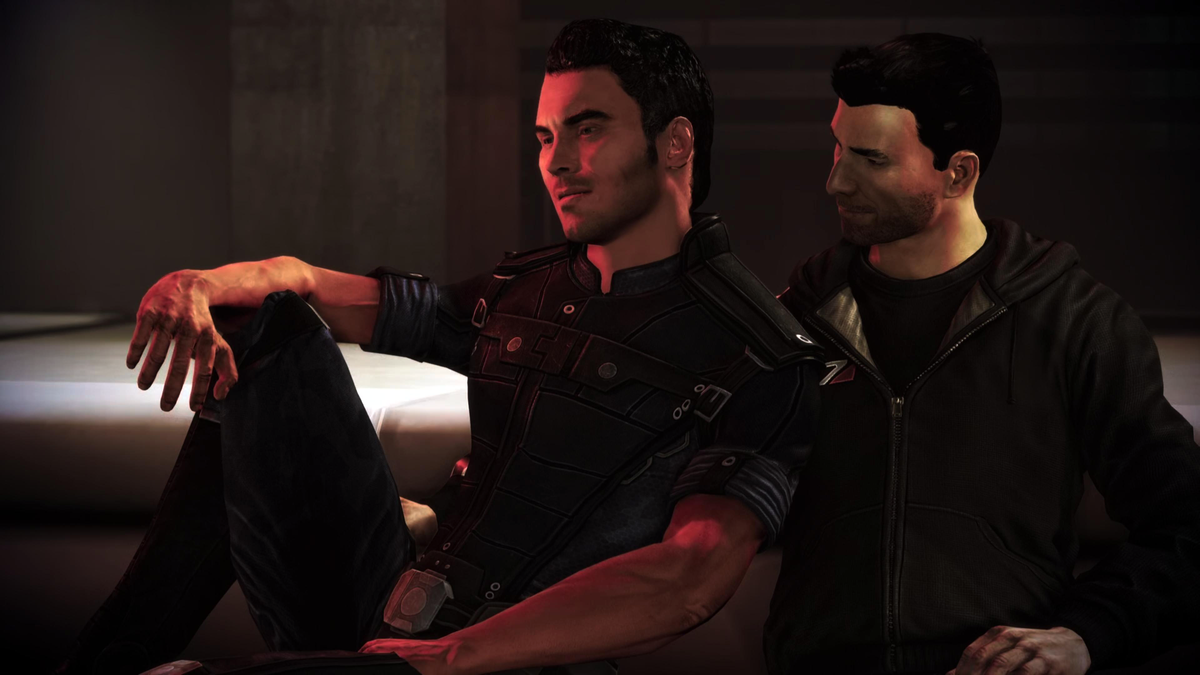
It took until Mass Effect 3 for Bioware to add two queer romance options for male Shepards: Kaidan Alenko, a party member in the first and third games, became a bisexual option for male and female players after being explicitly romanceable by female Shepards in the first game, and Steve Cortez, a new character who was exclusively available to male Shepards in Mass Effect 3.
In the near-decade since Mass Effect 3, Bioware developers have said that several queer romance options were struck from the series mid-development due to a fear of backlash.And so, here was my gay ass, confronted by a challenge: ignore Mass Effect’s push to have you hook up with one (or more) of your squadmates over the course of the first two games, until I could pursue Kaidan as a romantic option in Mass Effect 3.
To play Mass Effect as a story where Commander Shepard is explicitly a gay, male hero is not just to play the waiting game, but to push back against the series’ almost constant heterosexual assault on your senses.
Everywhere you look in the world of Mass Effect, even beyond its romance subplots, the gaze of straight male sexuality frames your interaction with the series.There are the gyrating, scantily clad bodies of Asari dancers in bars like Chora’s Den or Afterlife in Mass Effect and Mass Effect 2—dancers you’re invited to stay and admire as interactable “objects.†Not to mention a completely out-of-nowhere description of humanity’s relationship with the alien species of the galaxy by Shepard in the first game as: “We’ve got oceans, beautiful women, and this emotion called love.†Sexuality, and specifically heteronormative sexuality, is inextricably linked to the texture of Mass Effect’s galaxy, and focusing on the intimate perspective of your party members highlights that lens even further.
When there comes a point in Mass Effect where male Shepards are asked to “choose†between pursuing Liara or Ashley romantically, the conversation is framed with a sense of assurance that you must be interested in one of these two options.
Romancing Kaidan as a male Shepard in Mass Effect 3 almost feels like a metatextual acknowledgement of how long it took for Bioware to include male, queer romance options in the series.